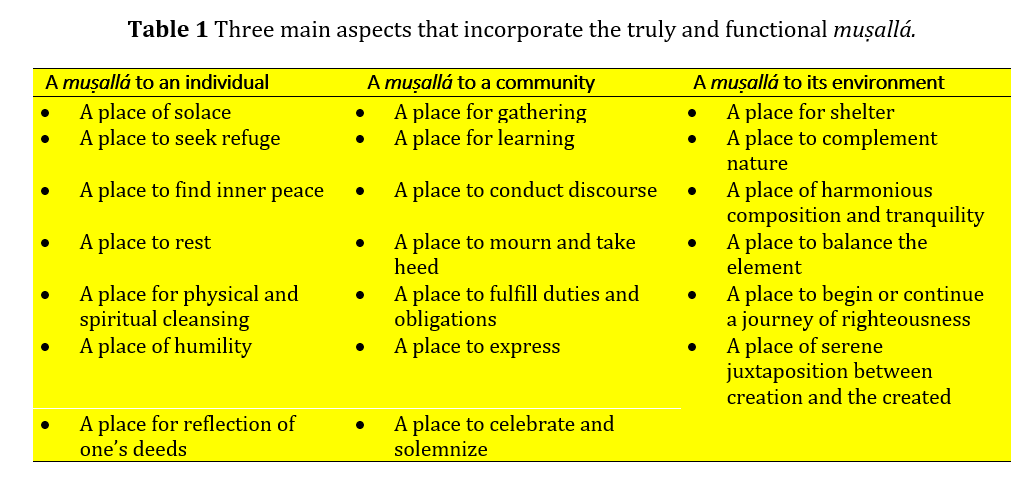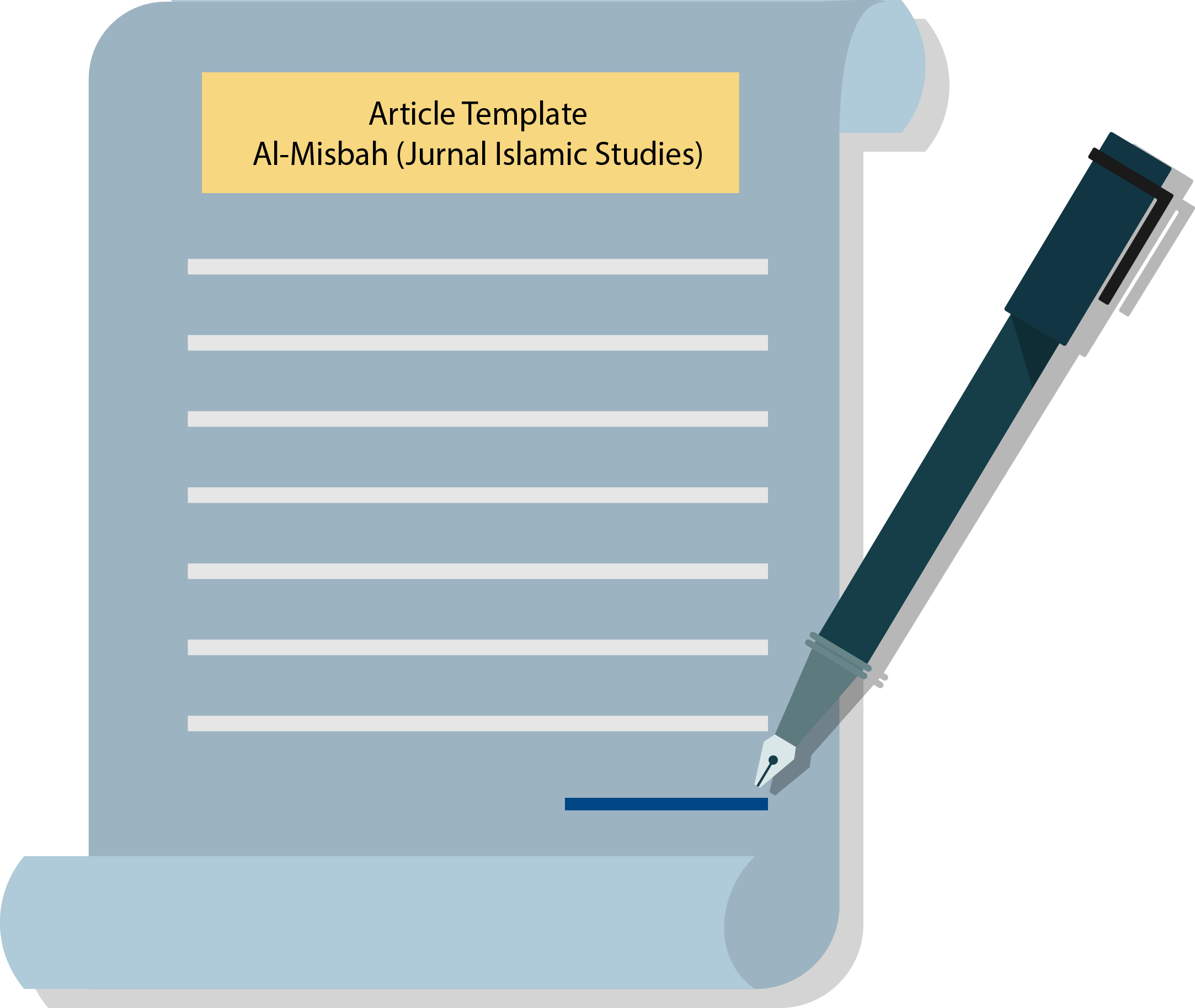A Review on the Fundamental Aspects of Female-Friendly Prayer Areas in Shopping Centres
DOI:
https://doi.org/10.26555/almisbah.v10i2.6662Keywords:
Prayer room, Gendered space, Shopping mall, Women’s access, Women-friendly facilities, Islamic studiesAbstract
Performing the five-time prayer is an obligation for every Muslim, no matter where they are. The provision of prayer rooms in commercial buildings is one of the facilities offered by building managers to accommodate Muslim buyers in most Muslim countries. However, the muṣallá provided is often remote, placed in a small or poorly planned space that most users, especially women, will feel uncomfortable and uncomfortable. This article aims to identify the feasibility of places of worship facilities for women in malls. The method in this study is qualitative with a descriptive-analytical approach. The results showed that the problems that came to the fore included the unresponsiveness of prayer rooms for the needs of women, inadequate entrance locations, uncomfortable ablution places, not being equipped with the necessary facilities, and some even not being child-friendly for parents. From this literature search, several research recommendations to investigate features and facilities in prayer rooms to make the area more responsive to the needs of Muslim female buyers. The results of this research have contributed to the development of Islamic education, namely increasing mutual awareness about the importance of providing decent worship facilities, especially for women.
References
Amin, N. G. A., & Ahmed, R. J. H. (2020). Perception of Women-Only Cafés in Kurdistan Region of Iraq. Black Sea Journal of Management and Marketing, 1(1), 29–40. https://doi.org/10.47299/bsjmm.v1i1.12
Batuman, B. (2018). Appropriating the Masculine Sacred Islamism, Gender, and Mosque Architecture in Contemporary Turkey.
Budd, L., Ison, S., & Budd, T. (2016). Improving the environmental performance of airport surface access in the UK: The role of public transport. Research in Transportation Economics, 59, 185–195. https://doi.org/10.1016/j.retrec.2016.04.013
Ceccato, V., Assiago, J., & Nalla, M. K. (2016). Crime and fear in public places Aim, scope and context. In Bundesgesundheitsblatt-Gesundheitsforschung-Gesundheitsschutz (Vol. 59, Issue 1).
CIA The World Factbook. (2021). Brunei - The World Factbook.
Golkowska, K. (2017). Qatari women navigating gendered space. Social Sciences, 6(4). https://doi.org/10.3390/socsci6040123
Güney, Y. I. (2014). Gender and urban space: An examination of a small anatolian city. A/Z ITU Journal of the Faculty of Architecture, 11(2), 153–172.
Hamid, A. B. A., Taib, M. Z. M., Wahab, M. H. A., & Alias, A. (2015). Chapter 15 The Design and Environmental Aspects of the Prayer Room. https://doi.org/10.1007/978-981-287-429-0_27
Hauck, Y., Bradfield, Z., & Kuliukas, L. (2020). Women’s experiences with breastfeeding in public: an integrative review.
Ibrahim, F. (2020). Restrictions on Women to enter Places of Worship under Islam and Hindu Religious Practices.
Iqbal, A. (2018). How safe are women-only parks perceived to be?
Kanes, J., Shoemaker, J., & Carlise, A. (2019). Women, cultural rights, and public spaceS Analysis and Recommendations to Advance Women’s Human Rights.
Khalili, A., & Fallah, S. N. (2018). Role of social indicators on vitality parameter to enhance the quality of women׳s communal life within an urban public space (case_ Isfahan׳s traditional bazaar, Iran) | Elsevier Enhanced Reader.
Khamnoi, S., & Ayuwat, D. (2019). Roles in Public Space of Wives Who Left Behind International Migrant Husbands. Journal of Economics and Business, 2(3). https://doi.org/10.31014/aior.1992.02.03.110
Kusters, A. (2017). When transport becomes a destination: deaf spaces and networks on the Mumbai suburban trains Annelies Kusters. https://doi.org/10.1080/08873631.2017.1305525
Mohammad Nor, F., & Hussein, E. (2018). Users’ satisfaction level on nursing facilities in shopping malls in penang. Built Environment and Technology.
Mortazavi, A. (2020). Gender-sensitive Public Space Planning Women participatory approach in urban planning Case study of Sätra-Stockholm.
Nyhagen, L. (2019). Mosques as Gendered Spaces: The Complexity of Women’s Compliance with, And Resistance to, Dominant Gender Norms, And the Importance of Male Allies. Religions 2019, Vol. 10, Page 321, 10(5), 321. https://doi.org/10.3390/REL10050321
Peters, D. (2013). Gender and Sustainable Urban Mobility.
Prickett, P. J. (2015). Negotiating Gendered Religious Space. Gender & Society, 29(1), 51–72. https://doi.org/10.1177/0891243214546934
Quinn, I. (2010). Women in Public Life in the Maldives - Situational Analysis. 148, 148–162.
Sadiqi, F. (2017). A Theoretical Framework for Research on Gender.
Sarial, A. S., Utaberta, N., Ismail, N. A., Mohd Ariffin, N. F., Mohd Yunos, M. Y., & Ismail, S. (2015). (18) (PDF) Evaluation of the Standard Design of the Prayer Room in Shopping Mall.
Shah, S., Viswanath, K., Vyas, S., & Gadepalli, S. (2017). Women and Transport in Indian Cities.
Snijders, A. (2019). ‘No key to the women’s area’; Gender participation in mosques in antwerp a study of female involvement in islamic life. The Grants Register 2019, 445–445. https://doi.org/10.1007/978-1-349-95810-8_715
Suratkon, A., Abd Salam, N. N., Rahmat, M. H., Mohd Arhan, A. S., Abd Wahab, I., & Ghaffar, S. A. (2018). Woman Friendly Mosque, Features and Facilities: A Case Study on Masjid Sultan Ibrahim, Universiti Tun Hussein Onn Malaysia. IOP Conference Series: Materials Science and Engineering, 291(1). https://doi.org/10.1088/1757-899X/291/1/012019
Terraza, H., Orlando, M. B., Lakovits, C., Lopes Janik, V., & Kalashyan, A. (2020). Handbook for Gender-Inclusive Urban Planning and Design. Handbook for Gender-Inclusive Urban Planning and Design. https://doi.org/10.1596/33197
Utaberta, N., Omi, F. S., Roslan, S. B., & Ariffin, F. M. (2018). An analysis of women’s access and participation in the mosques in the contemporary world. IOP Conf. Ser.: Mater. Sci. Eng, 401, 12032. https://doi.org/10.1088/1757-899X/401/1/012032
Vishnoi, S. (2018). “Traditions Impinging Legal Rights-Ban on Women’s Entry into Temples.” 2.
Zaragovia, V. (2009). Will High-Heel-Friendly Streets Keep Seoul’s Women Happy?

Downloads
Published
How to Cite
Issue
Section
License
Copyright (c) 2022 Siti Ayeshah Shahrin; Haji Abdul Hafidz Omar

This work is licensed under a Creative Commons Attribution-ShareAlike 4.0 International License.
Authors who publish with Al-Misbah agree to the following terms:
- Authors retain copyright and grant the journal right of first publication with the work simultaneously licensed under a Creative Commons Attribution License (CC BY-SA 4.0) that allows others to share the work with an acknowledgment of the work's authorship and initial publication in this journal.
- Authors are able to enter into separate, additional contractual arrangements for the non-exclusive distribution of the journal's published version of the work (e.g., post it to an institutional repository or publish it in a book), with an acknowledgment of its initial publication in this journal.
- Authors are permitted and encouraged to post their work online (e.g., in institutional repositories or on their website) prior to and during the submission process, as it can lead to productive exchanges, as well as earlier and greater citation of published work.

This work is licensed under a Creative Commons Attribution-ShareAlike 4.0 International License.



